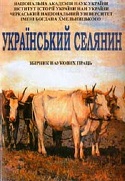Activity of authorized persons and executors of the Holodomor genocide of 1932–1933: methodological aspect
Main Article Content
Abstract
Introduction. Complex analysis of statization of society by the communist totalitarian regime, monopolization of power by
a single mass party, its splicing with state apparatus, functioning of branched repressive apparatus are key aspects of study of the
outlined issues.
Unfortunately, historians do not suffi ciently study the methodology related to the genocide of Ukrainians, limiting themselves to
the analysis of general and special methods of scientifi c research within articles, qualifi cation works or monographs.
The purpose of the research is to analyze and synthesize key directions (approaches) in the methodology for systematic study
of the 1930s reality, especially functioning of the institute of authorized people and executors of the 1932–1933 Holodomor Genocide
(circumstances of its creation, structuring, functioning, consequences of its activity).
Methodology is based on the interdisciplinary approach and systematic principle. Principle of historicism was used for
correlation of different studies of communist totalitarian regime (of total control of the state over all social spheres, destruction
of sovereignty of personality, creating of specifi c “referent groups”, institute of authorized people and executors) with new
methodological approaches. Along with general methods (analysis, synthesis, deduction, generalization), the author used special
ones, such as historical comparative, systematic, and historical typological.
Originality of the article is the conceptualization of methodological approaches to the topic of authorized people and executors’
actions.
Conclusions. As a result, six methodological approaches were studied and there of them (socio-cultural, anthropo-sociocultural, and synergetic) were specifi ed. They allow complex study of creation, functioning, and consequences of institute of
authorized people and executors’ activity. Also, it was proven that the methods and scientifi c defi nitions of history of everyday life and anthropologically oriented history (anthropological history) are the most suitable for systematic study of the topic.
Article Details

This work is licensed under a Creative Commons Attribution-NonCommercial 4.0 International License.
References
Vasyliev, V. (2014). Politychne kerivnytstvo URSR i SRSR: dynamika vidnosyn tsentr–subtsentr vlady (1917–1938) [Political
Management of the Ukrainian SSR and the USSR: Dynamics of the relations center – sub-center of power (1917–1938)]. Kyiv: Institute
of History of Ukraine of National Academy of Sciences of Ukraine. [in Ukrainian].
Doroshko, M. (2004). Kompartiino-dershavna nomenklatura USRR u 20–30-ti roky XX stolittia: sotsioistorychnyi analiz
[Communist Party and State Nomenklatura of Ukrainian Socialist Soviet Republic in the 1920–1930s’: Social Historical Analysis].
Kyiv: Publishing and Printing Center “Kyiv University”. [in Ukrainian].
Kulchytskyi, S. (2013). Chervonyi vyklyk. Istoriia komunizmu v Ukraini vid yoho narodzhenniia do zahybeli. Knyha 2. [Red
Challenge: History of Communism in Ukraine from Its Birth to Death. Book 2]. Kyiv: Tempora. [in Ukrainian].
Marochko, V. (2018). Entsyklopediia Holodomoru 1932–1933 rokiv v Ukraini. [Encyclopedia of the Holodomor of 1932–1933
in Ukraine]. Drohobych: Kolo. [in Ukrainian].
Podkur, R. (2000). Za povidomlenniamy radianskykh spetssluzhb. [Accordingly to the Messages of Soviet Special Services].
Kyiv: Ridnyi krai. [in Ukrainian].
Romanets, N. (2014). Represyvna polityka radianskoi vlady v ukrainskomu seli (1925–1939). [Repressive Policy of Soviet
Authorities in Ukrainian Village (1925–1939)]. Kryvyi Rih: R. A. Kozlov.[in Ukrainian].
Serhiichuk, V. (2015). Holodomor 1932–1933 rokiv yak henotsyd ukrainstva. [The Holodomor of 1932–1933 as the Genocide
of Ukrainians]. Vyshhorod: M. I. Serhiichuk. [in Ukrainian].
Vasyliev, V. & Shapoval, Yu. (Eds.). (2001). Komandyry velykoho holodu: poizdky V. Molotova i L. Kahanovycha v Ukrainu
ta Pivnichyi Kavkaz. 1932–1933 rr. [Commenders of Great Famine: Trips of V. Molotov and L. Kaganovich in Ukraine and North
Caucasus. 1932–1933]. Kyiv: Heneza. 399 s. [in Ukrainian].
Udod, O., Vermenych, Ya., Kovalevska, O., Yas, O., & Blashchuk, S. (2018). Narysy z sotsiokulturnoi istorii ukrainskoho
istoriiepysannia subdystsyplinarni napriamy. [Essays on the Socio-Cultural History of Ukrainian Historiography: Subdisciplinary
Directions]. Kyiv: Heneza. [in Ukrainian].
Stasiuk, O. (2018). “Holodomor-henotsyd” yak katehoriia polidystsyplinnoho istorychnoho doslidzheniia podii 1932–1933
rokiv v Ukraini. [Holodomor-genocide” as a category of multidisciplinary historical study of the events of 1932-1933 in Ukraine].
Ethnic History of the Nations of Europe, 56, 106–113. [in Ukrainian].
Markova, S. (2012). Vykorystannia teorii strukturatsii E. Hiddensa u doslidzhenni istorii Ukrainy pershoi polovyny XX
stolittia: metodolohishnyi aspect. In: Suspilni nauky: istoriiam suchasnui stan ta perspektyvy doslidzheniia. Materialy mizhnarodnoi
naukovo-praktychnoi konferentsii (m. Lviv, 14–15 hrudnia 2012) [Social Sciences: History, Contemporary State and Study Perspectives.
Proceedings of International Scientifi c and Practical Conference (Lviv, December 14–15, 2012)]. Lviv. [in Ukrainian].
Ahiezer, A. (1994). Samobytnost Rossii kak nauchnaya problema. [The originality of Russia as a scientifi c problem].
Otechestvennaya istoria [National history], 4–5, 3–25. [in Rusiian].
Shanin, T. (2010). Selianstvo: okresleniia sotsiolohichnoho poniattia. Ukraina moderna [Modern Ukraine], 6 (17), 171–182.
[in Ukrainian].
Udod O., Vermenych Ya. (Ed) (2018). Narysy z sotsiokulʹturnoyi istoriyi ukrayinsʹkoho istoriyepisannya: subdistsiplinarni
napryamy [Drawing from the social and cultural history of the Ukrainian history: subdisciplinary direct], 1. Kyiv: Heneza. [in Ukrainian].
Pyrohova-Taran L. (2013). Etnolohiia ta / chy istorychna antropolohiia [The originality of Russia as a scientifi c problem].
Ukrainskyi istorychnuyt zhurnal [Ukrainian Historical Journal], 1, 124. [in Ukrainian].
Markova, S. (2015). Suspilno-politychni zminy v ukrainskomu seli u konteksti formuvannia komunistychnoi systemy (1917–
. [Social and Political Changes in Ukrainian Village in the Context of Communist System Forming (1917–1933)]. Doctor’s thesis.
Kamianets-Podilskyi. [in Ukrainian].
Thompson, E. (1980). Plebejische Kultur und moralische Ökonomie. Aufsätze zur englischen Sozialgeschichte des 18. und 19.
Jahrhundert [Customs in Common. Studies in Traditional Popular C. Frankfurt a. M. [in German].
Koliastruk, O. (2007). Metodolohiia. Istoroihrafi ia. Dzhereloznavstvo. [Methodology. Historiography. Source studies].
Ukrainskyi istorychnuyt zhurnal [Ukrainian Historical Journal], 1, 174–184. [in Ukrainian].

